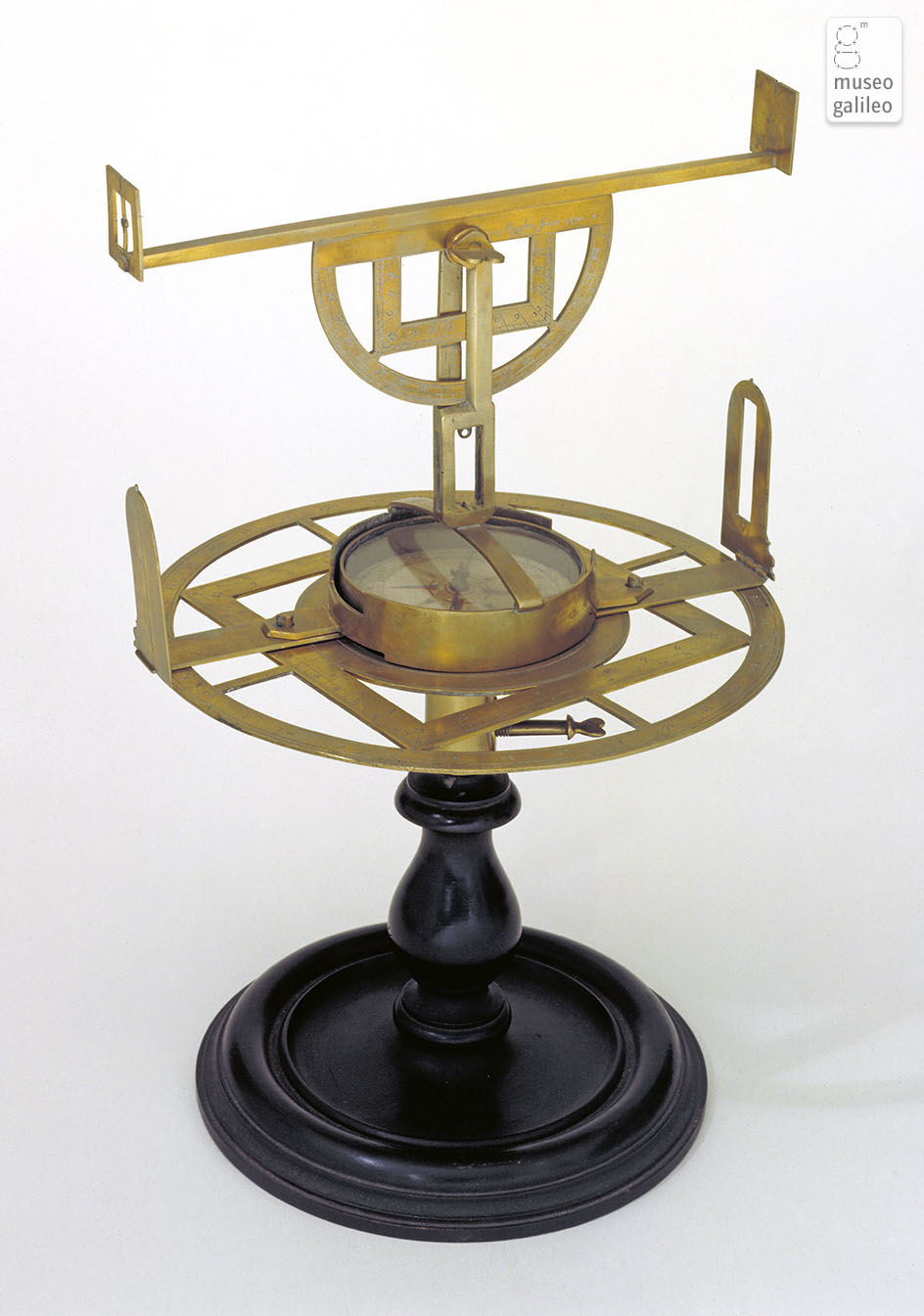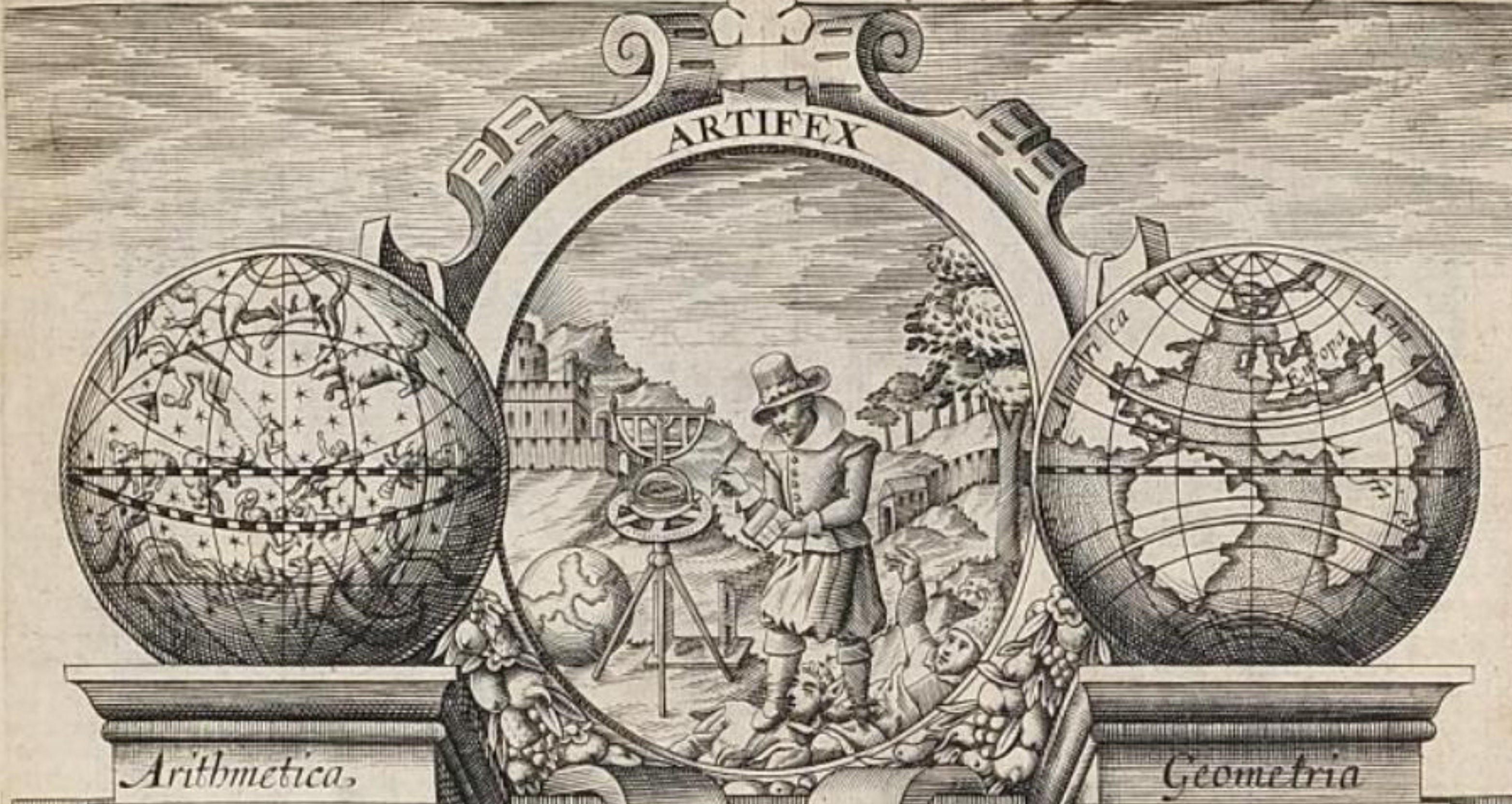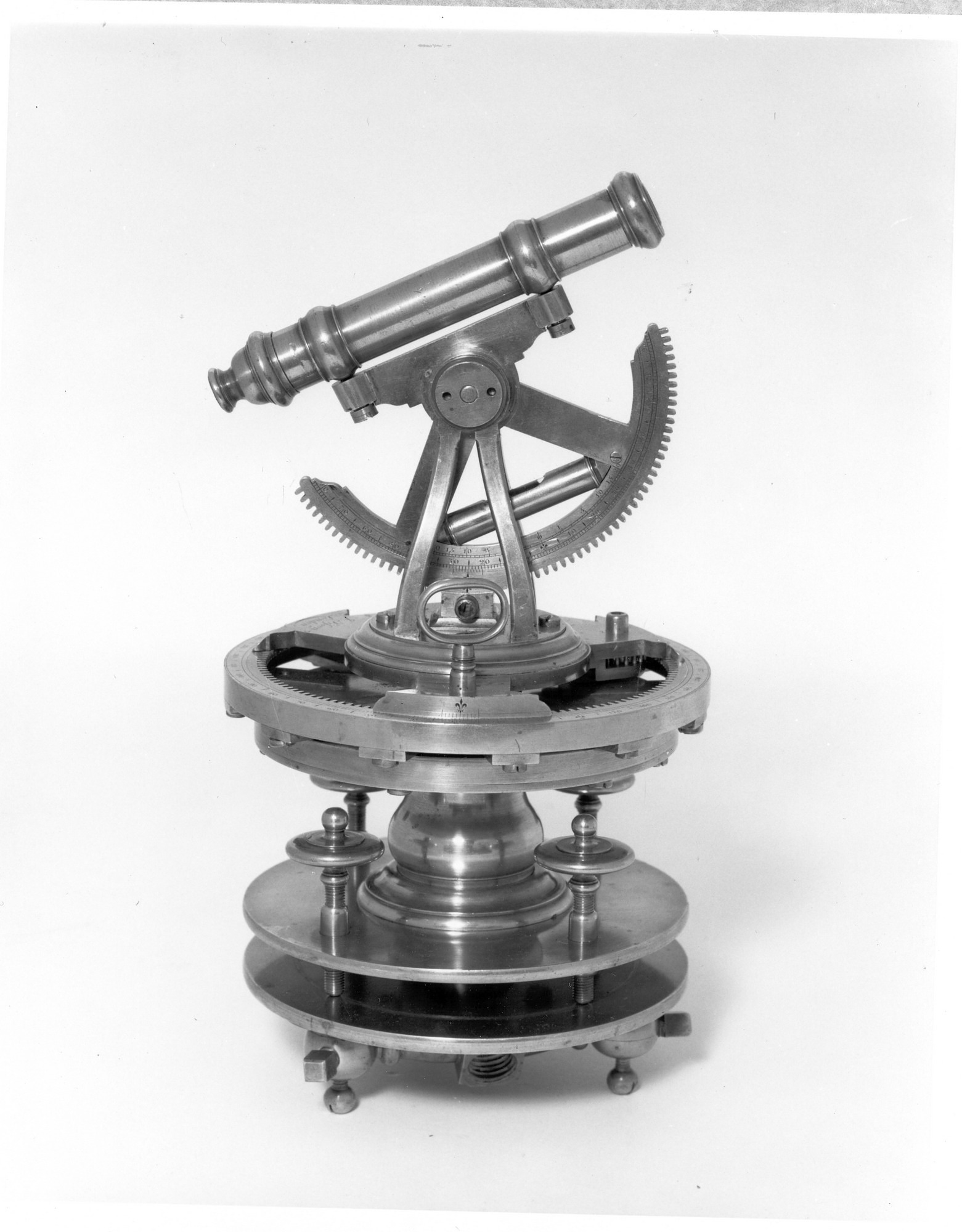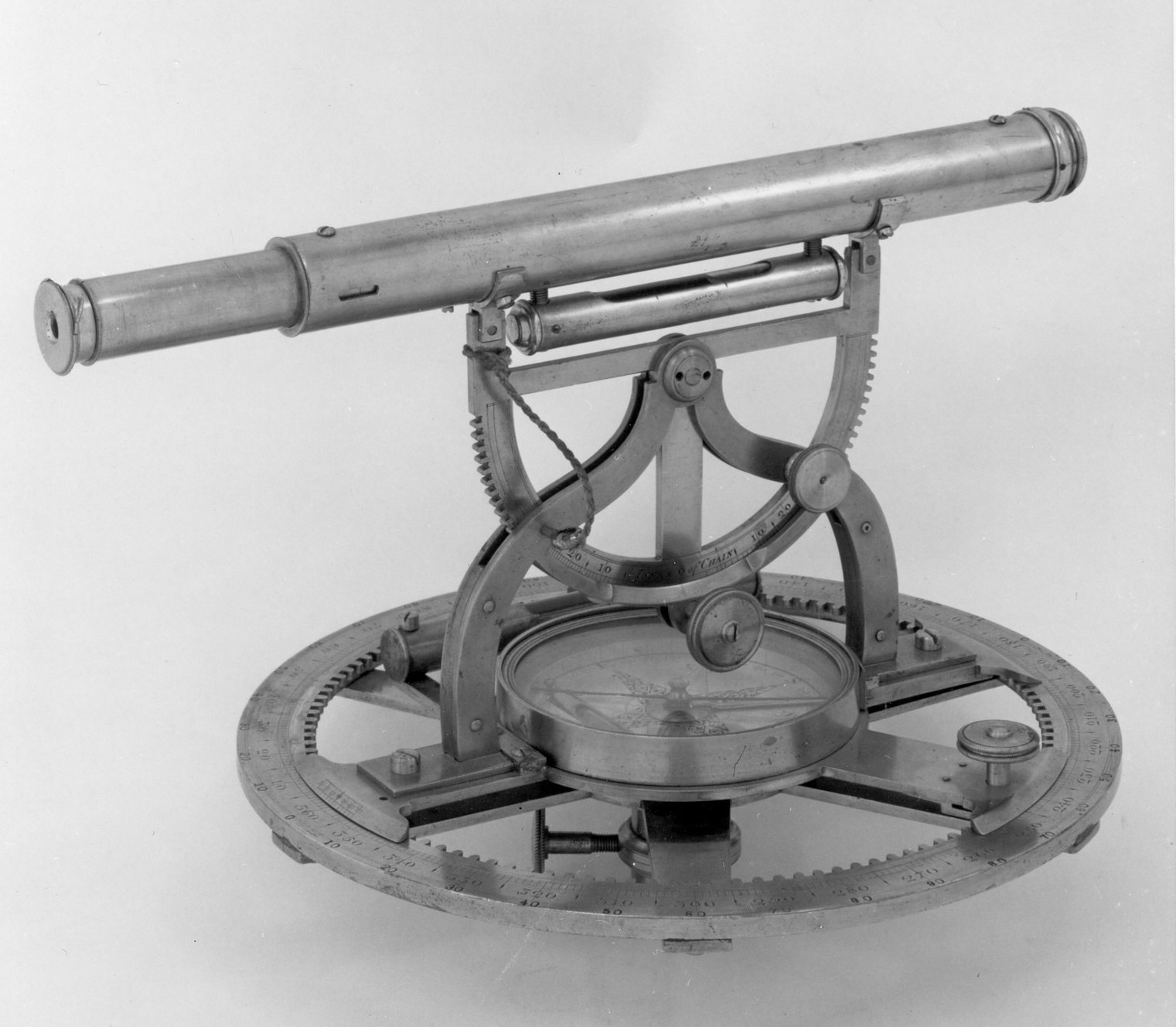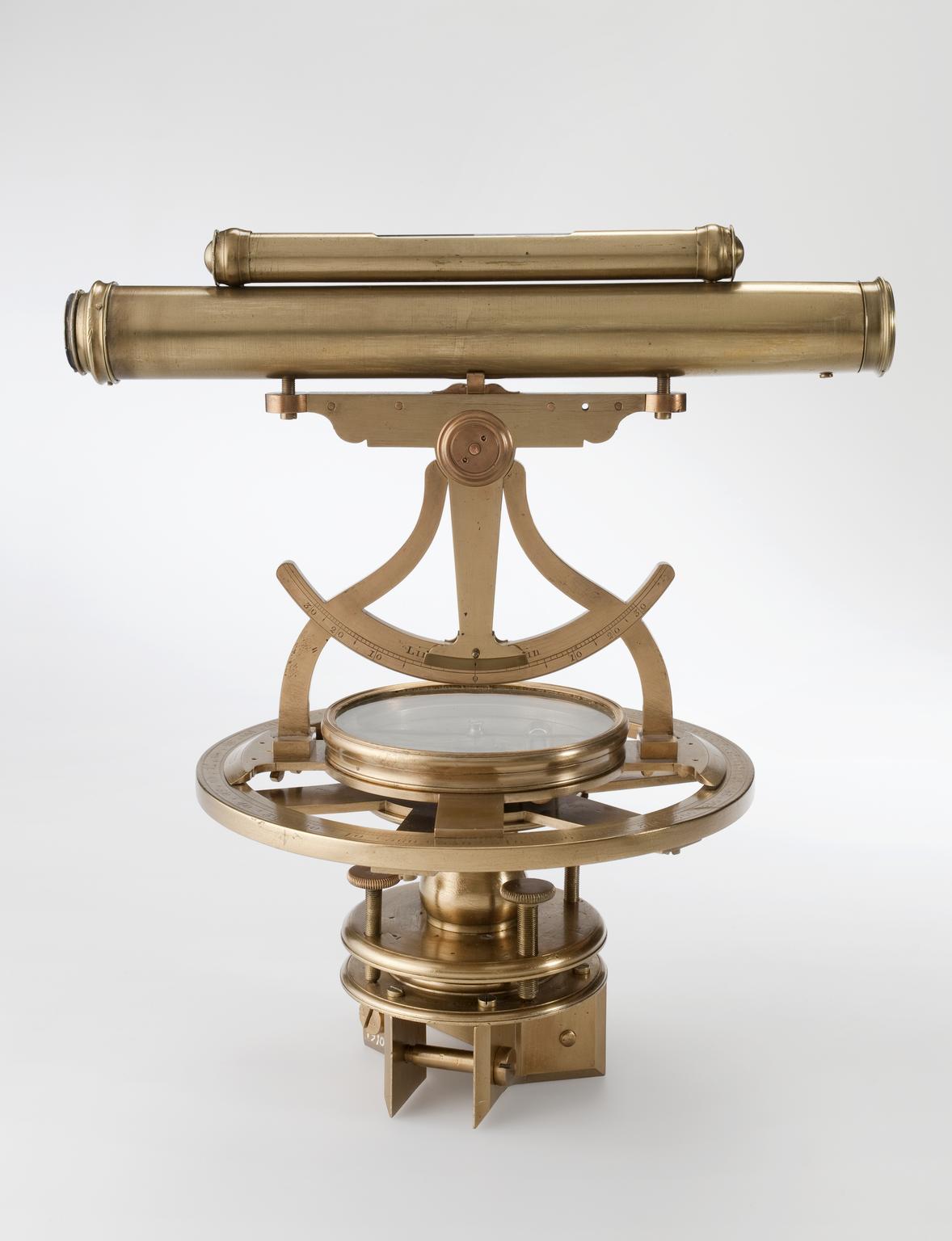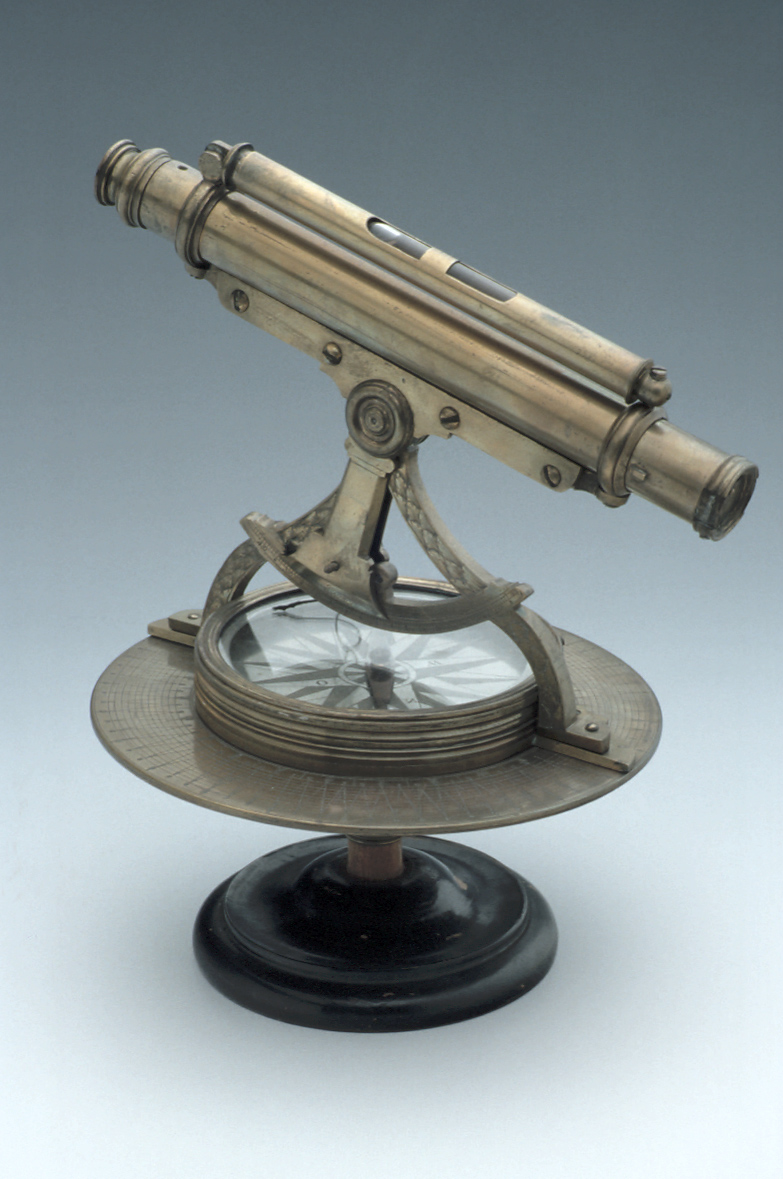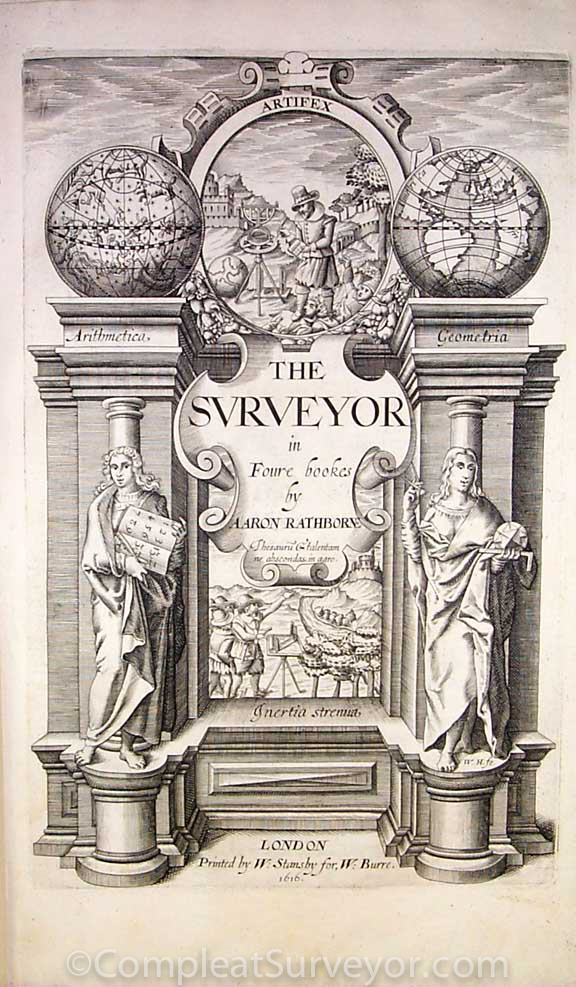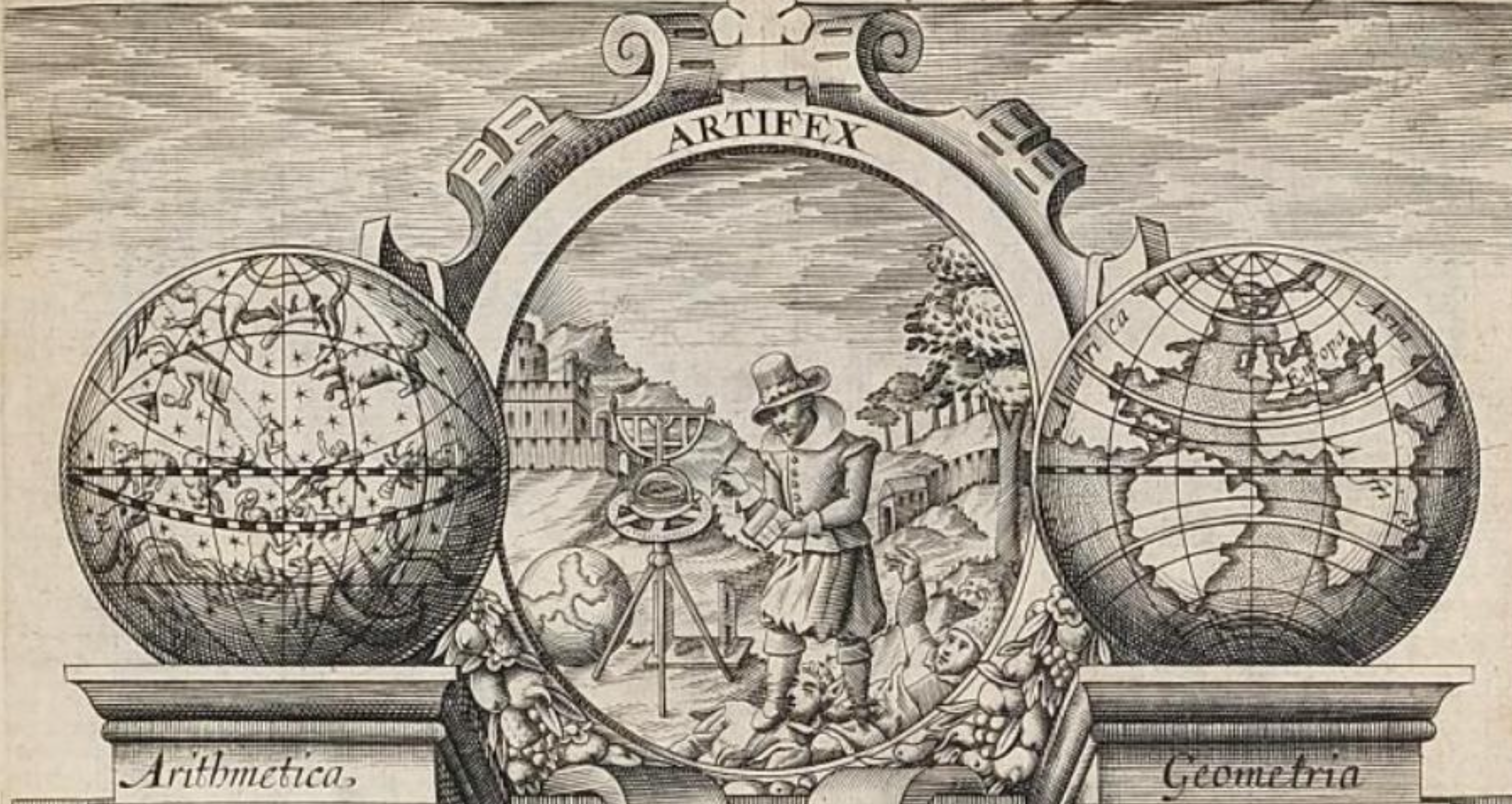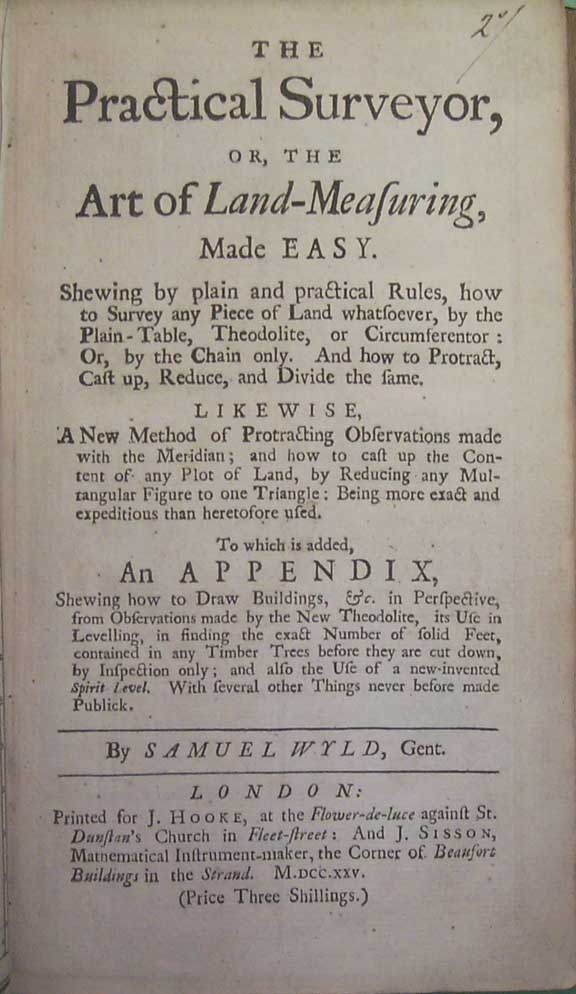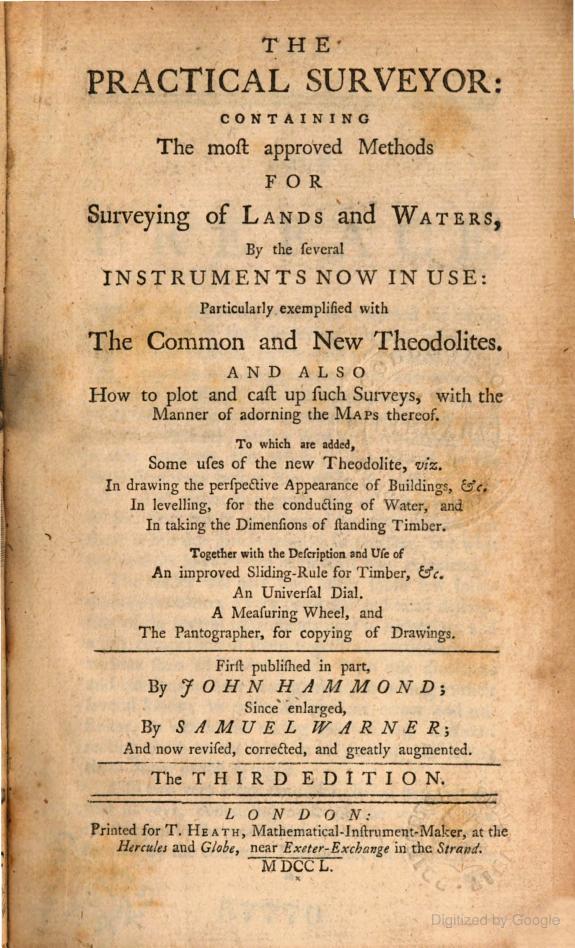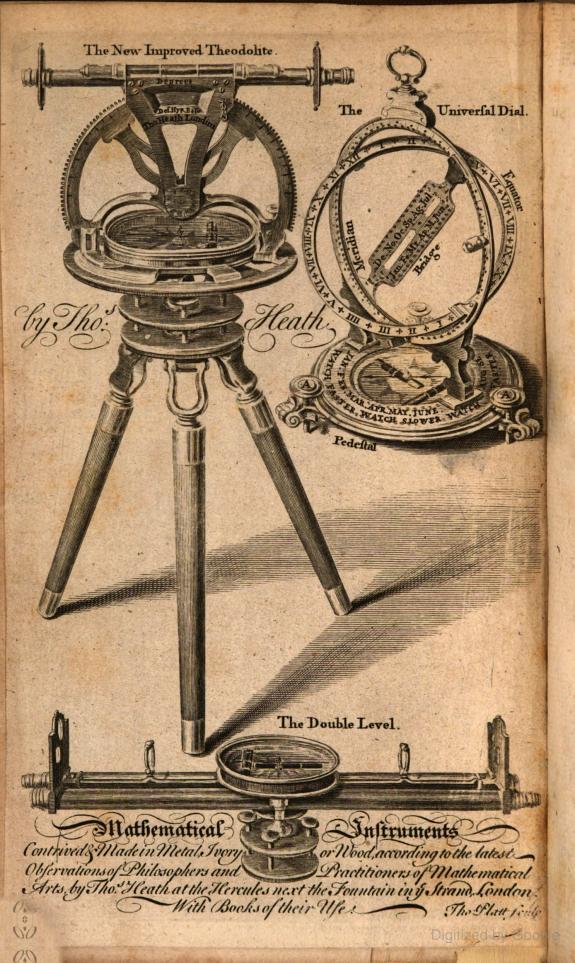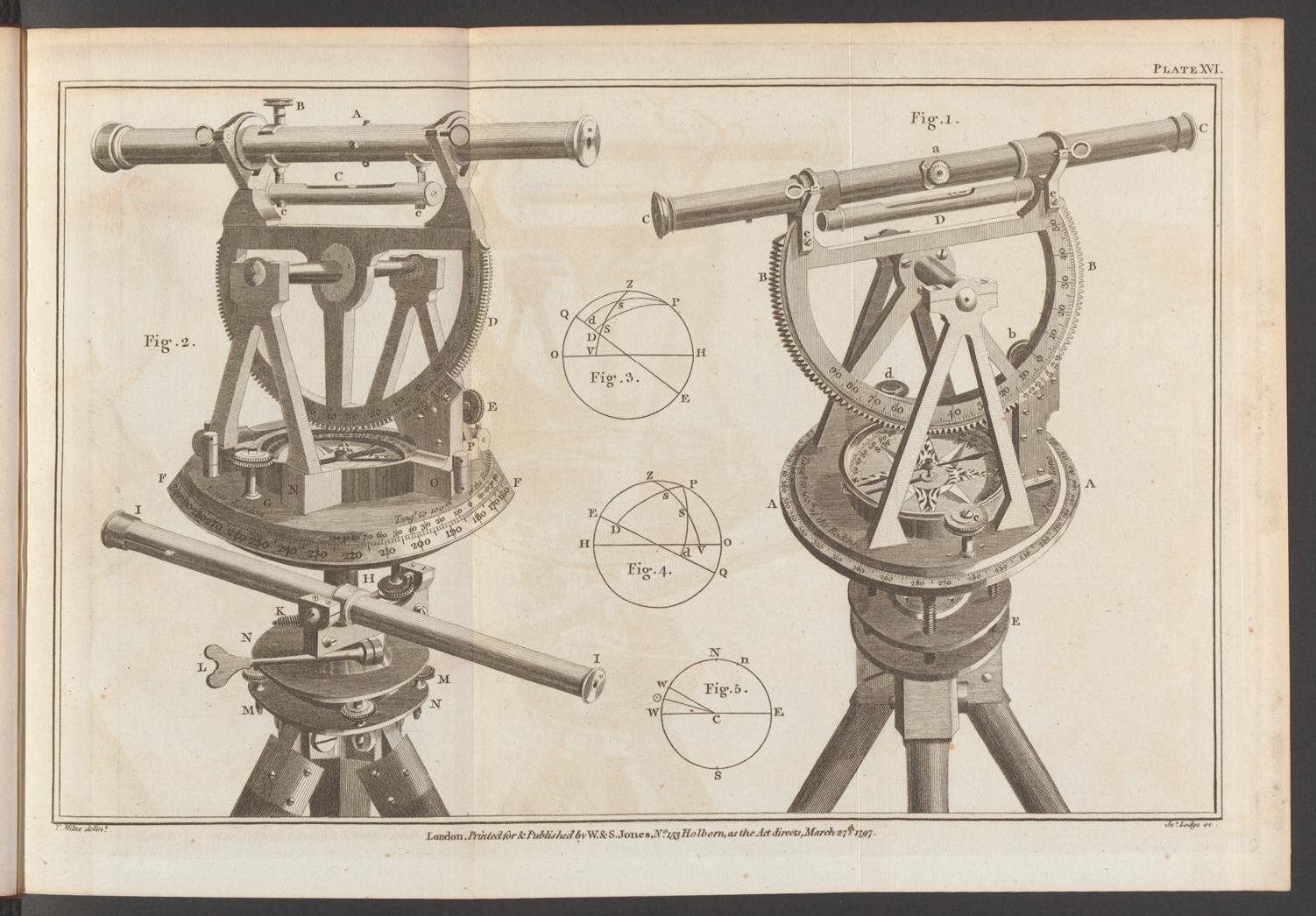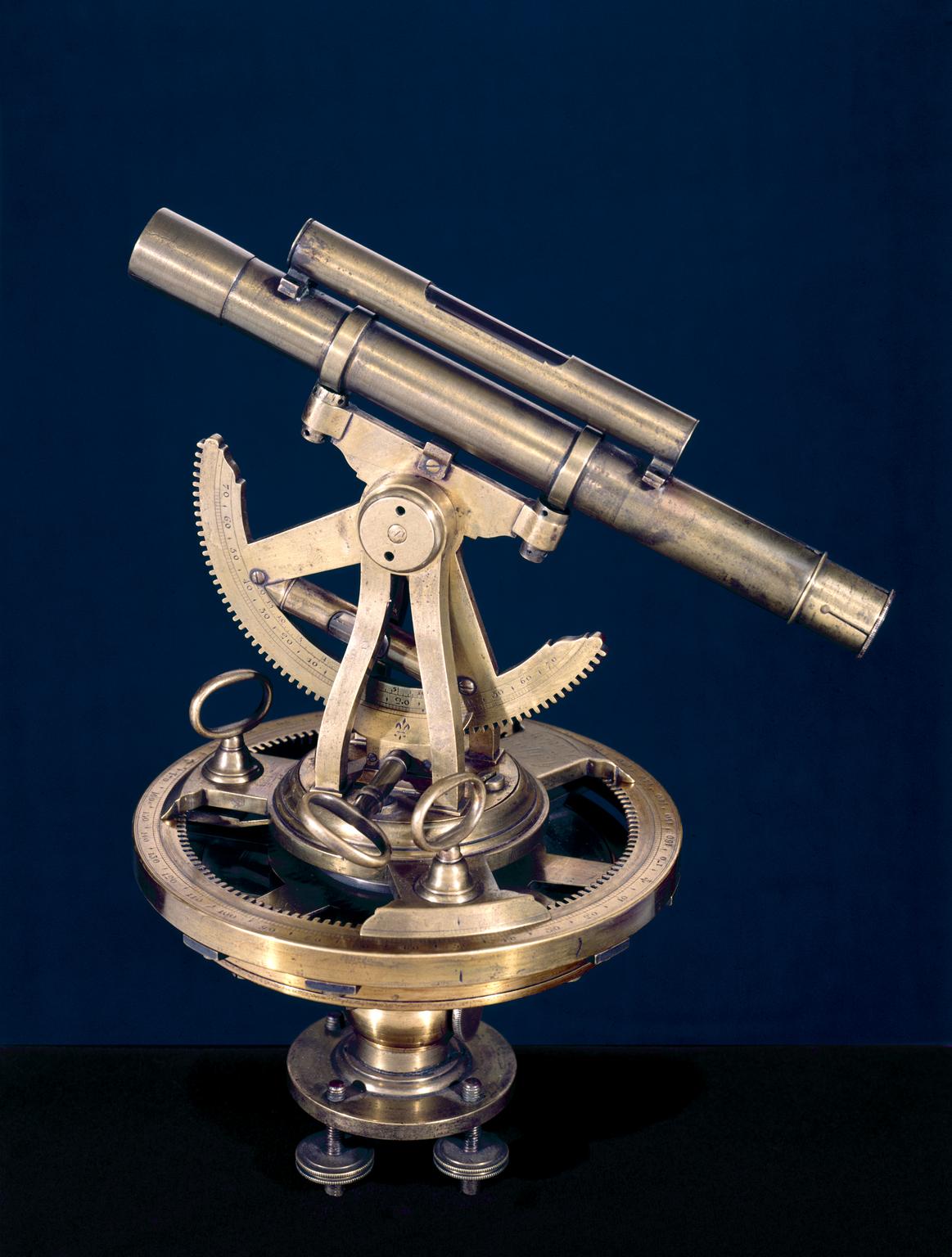
Beautiful Sission Theodolite Circa 1740
Third Generation Theodolite
Starting in the early 16th Century Mathematical Practitioners envisioned an instrument that could measure both horizontal and vertical angles. Such an instrument is pictured in the illustration to the below left - the illustration was published in 1512. The instrument pictured to the below right was made in England in 1590. These dual purpose instruments were unsuccessful from a commercial perspective, however. I suspect that these somewhat unwieldy instruments could not compete with a much more managable Second Generation Dou style Theodolite, which when hung vertically, could measure vertical angles perhaps more accurately that the dual purpose instrument. Plus, I also suspect there wasn't much demand for vertical measuring devices, so an unwieldy dual purpose instrument would have been overkill most of the time.
This equation hold true until roughly 1725, when Sisson placed a telescope on top of a Second Generation Theodolite, and Wyld thereafter published a book showing the instrument. The Third Generation - Altazimuth Theodolite was born. This wonderful dual purpose instrument slowly replaced its competitors - Second Generation Theodolites, Circumferentors, Plane Tables, etc as the Surveyor's instrument of choice. John Dollond's commercialization of the Achromatic lens in the 1750s, which made telescopes much more useful, meaningfully enhanced the value of Telescopic Altazimuth Theodolites. Along with the dual purpose American Transit, the dual purpose Third Generation Theodolite dominated the market for surveying instruments in the 19th and 20th centuries.
George Adams, the famous English maker of instruments, stated the value of Telescopic Altazimuth Theodolites very bluntly in his late 18th century books/catalogues:
"Theodolites with telescopic sights are, without doubt, the most accurate, commodious, and universal instruments for the purposes of surveying, and have been recommended as such by the most expert practitioners and best writers on the subject, as Gardiner, Hammond, Cunn, Stone, Wyld, Waddington, &c."
Early Altazimuth Theodolites (Circa 1500 to 1650)
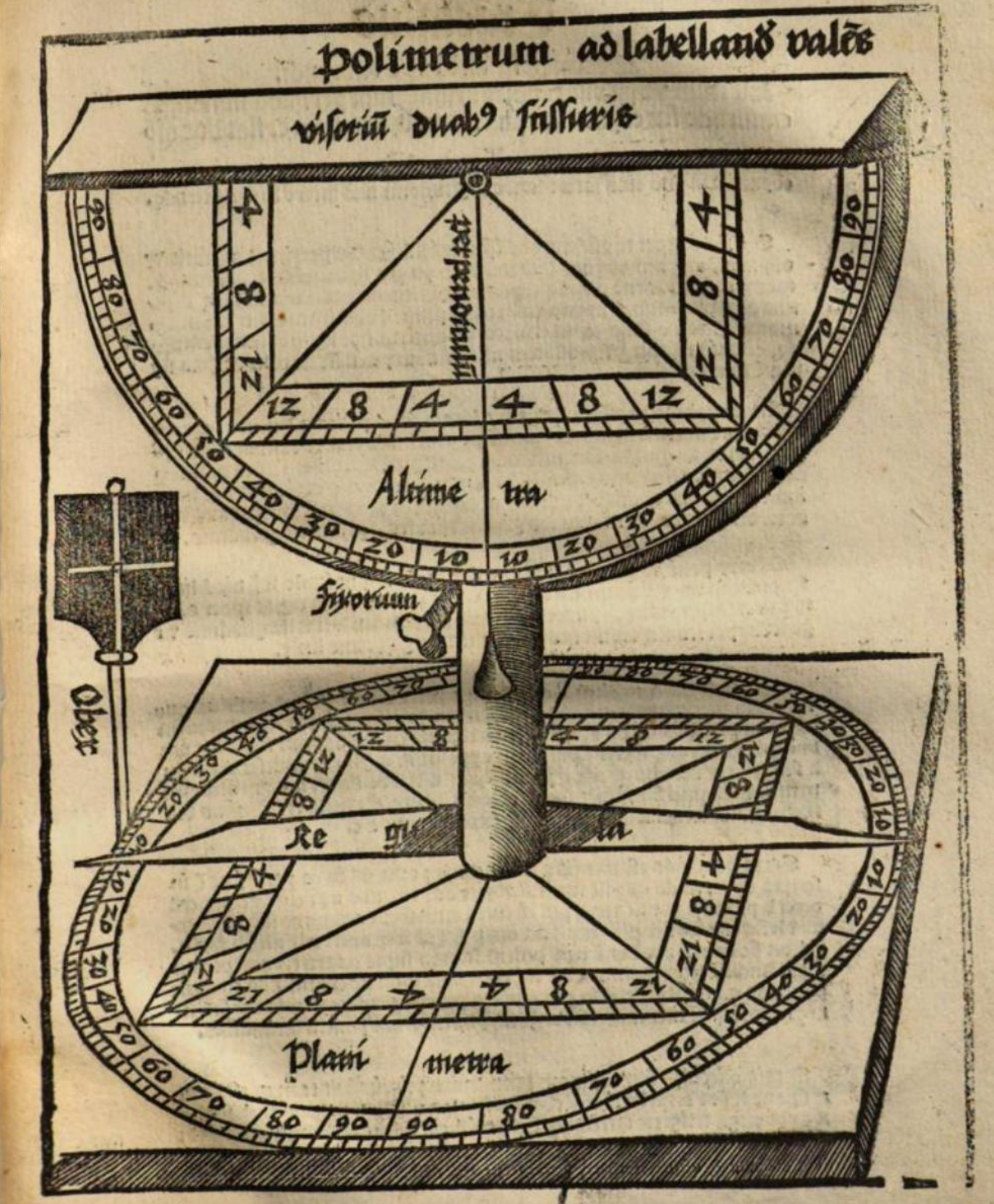
1512 Waldseemuller - Margarita Philosphica
Thrid Generation Theodolites - Telescopic Altazimuth Theodolites (Circa 1725 to 1800)
Telescopic Altazimuth Theodolites are wonderful instruments, especially those made between 1725 and 1800. As discussed below, you see a good deal of variation in the pre-1800 Third Generation instruments. The variations pretty much disappeared by 1800, however, when the popular form of the Theodolite took over and almost all the Theodolites looked alike for the next 75 to 100 years.
Take a look at the pics below. You will see that the early Telescopic Altazimuth Theodolite makers basically replaced the sight vanes from a Second Generation Theodolite instrument with a telescope and vertical arc setup. This created one fairly common early variation - a convertible instrument. With this variation, a surveyor could use the theodolite either with the two or four sight vanes to measure just horizontal angles, or with the telescope to measure both horizontal and vertical angles. Please take a look at my Circa 1760 Cole Theodolite to see a really nice Convertible Third Generation Theodolite.
Another variation found on pre-1800 Third Generation instruments - the different vertical arcs used. Compare the arcs on the instruments pictured below. The arc's range from +/- 30 degrees to 270 degree arcs, with some of the arcs upside down.
The base of the instrument was yet another variation found on pre-1800 Third Generation instruments. Compare the bases of the instruments pictured below. Some have a flat plate base, while others have spoked bases.
Finally, note the difference in the amount of gearing each instrument offers. The more precise and therefore expensive instruments have gearing, while the lesser models don't have gearing.
Collectability
I view Third Generation Theodolites as VERY collectable instruments. Top of the Food Chain.
The Third Generation Theodolite - the Altazimuth Theodolite - turned out to be the surveyor's instrument of choice for centuries (if we treat the American Transit and part of the same family of instruments as the Theodolite). Early Theodolites (1725 to 1800) are fairly uncommon and yet surprisingly affordable. They are wonderful looking instruments, with many different designs produced over the years. Importantly, early Americans imported a good number of Third Generation Theodolites as evidenced by ads placed in colonial newspapers, which greatly enhances the value of these very cool instruments in America.
As a general rule - the more gearing an early Third Generation Theodolite has, the more valuable it is.
Important Books - Third Generation Theodolites
Below are some of the important books related to the Third Generation of Theodolites.
Rathborne's1616 book shows an altazimuth instrument but unfortunately the book doesn't describe the instrument. As noted above, while some altazimuth instruments were made in the 17th century, the instruments didn't really catch on.
Altazimuth theodolites became commercially viable when makers added a telescope and vertical arc to the basic design of the simple theodolite. Two books published 6 years apart were instrumental in evolving theodolites from a horizontal angle measuring device to a full blown horizontal and vertical measuring device. Wyld first published his book in 1725 that set forth the basic design of an altazimuth theodolite. Not to be outdone, Hammond published his version of the altazimuth theodolite in the 2nd Edition of his book in 1731.
I also included a book by George Adams, the famous English maker of fine instruments. The book is his 1797 second edition of Geometrical and Graphical Essays, which discussed a variety of instruments, including the Second Generation and Third Generation Theodolites. (Adams refers to these as Common and Improved Theodolites, respectively, and discusses the Common Theodolite on page 223 et seq. and the Improved Theodolite on page 231 et seq.)
My Reference Materials
Here are the main reference books I used while researching my Ancient Surveying Webpages:
5-Volume Catalogue Of The Most Important Worldwide Private Collection Of Scientific Instruments (With 928 Color Illustrations). Written in German, but an amazing reference tool. The pictures are incredible - most of the instruments are not found on the internet. Crazy Expensive.
Bennett's Catalogue of Surveying and Related Instruments (2022). Fantastic pics and info about the surveying related instruments at the Galileo Museum (which has an INCREDIBLE collection of early instruments).
Bennett's The Divided Circle (1987). A History of Astronomy, Navigation and Surveying Instruments.
Delalande Antiques Two Volume book series on Astrolabes. The two volumes walk you thru how to use and collect Astrolabes. A must have if you want to collect Astrolabes.
Kiely's Surveying Instruments - Their History (1947) Somewhat dated now, but still has a great deal of relevant information. Not the easiest read, however.
Daumas' Scientific Instruments of the 17th and 18th Centuries (Translated into English 1972).
Richeson's English Land Measuring to 1800 (1966). A nice book that is mis-paginated unfortunately. But still contains some good information about early English land surveying.
Important Websites where you can use the search function (e.g. "Theodolite") to find instruments:
The Museo Galileo Virtual Museum - A Stunning Collection of Early Surveying Instruments
The Science Museum Group (UK Based)
Harvard University Collection of Scientific Instruments
The Museum of History and Science, Oxford
© 2020 Russ Uzes/Contact Me
